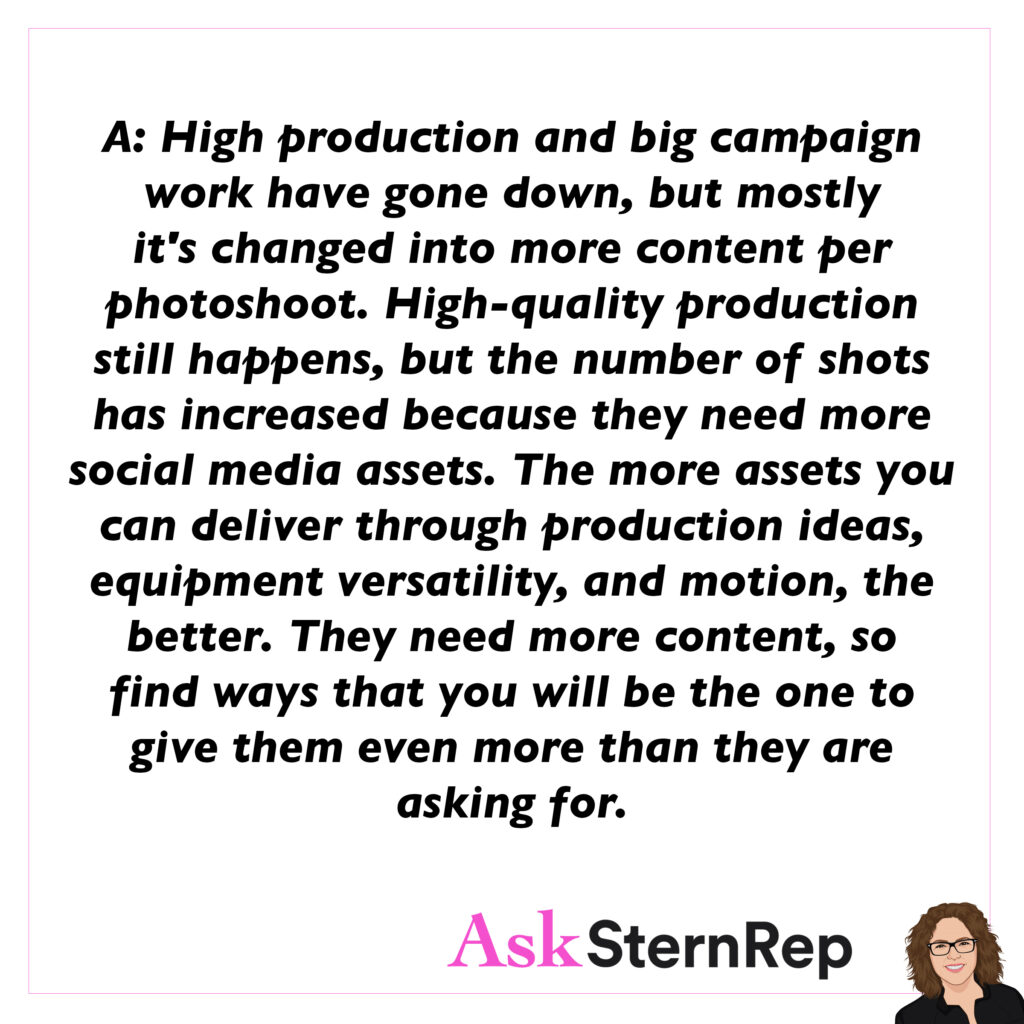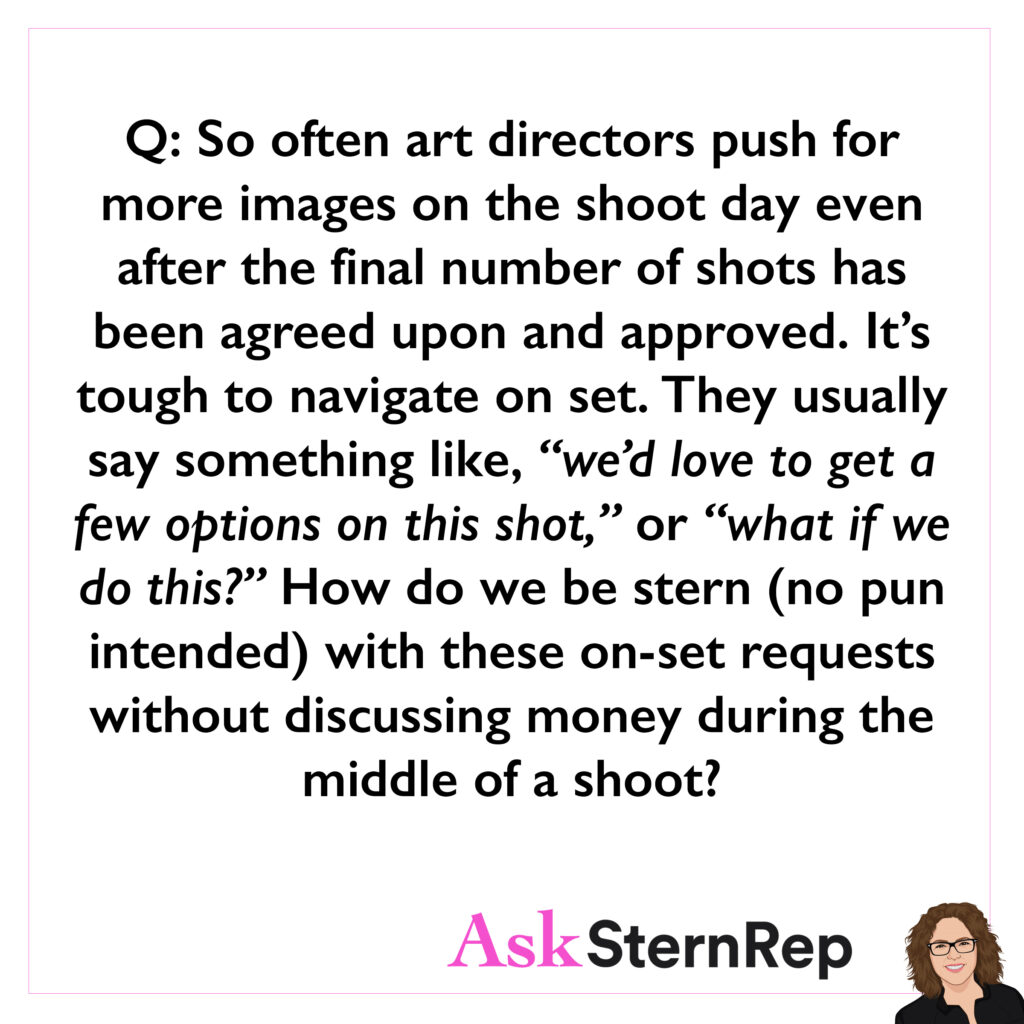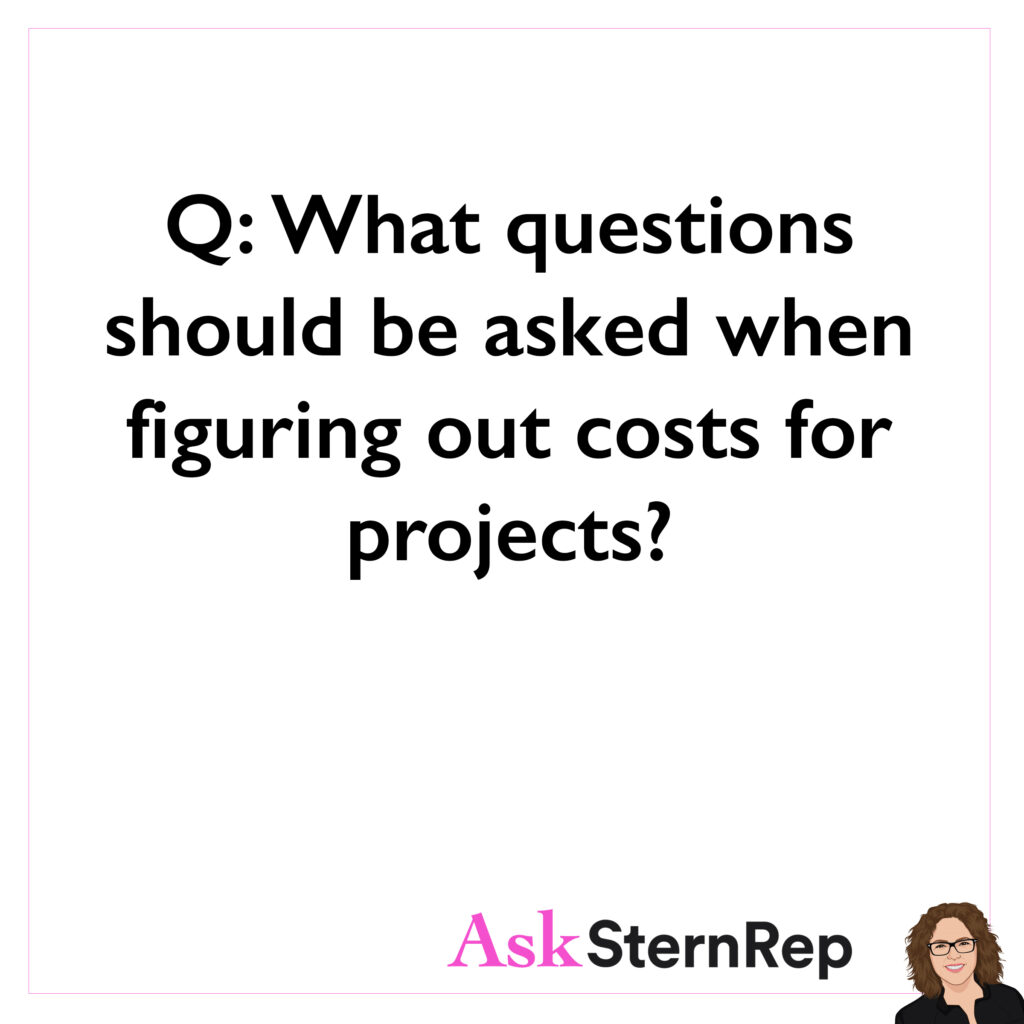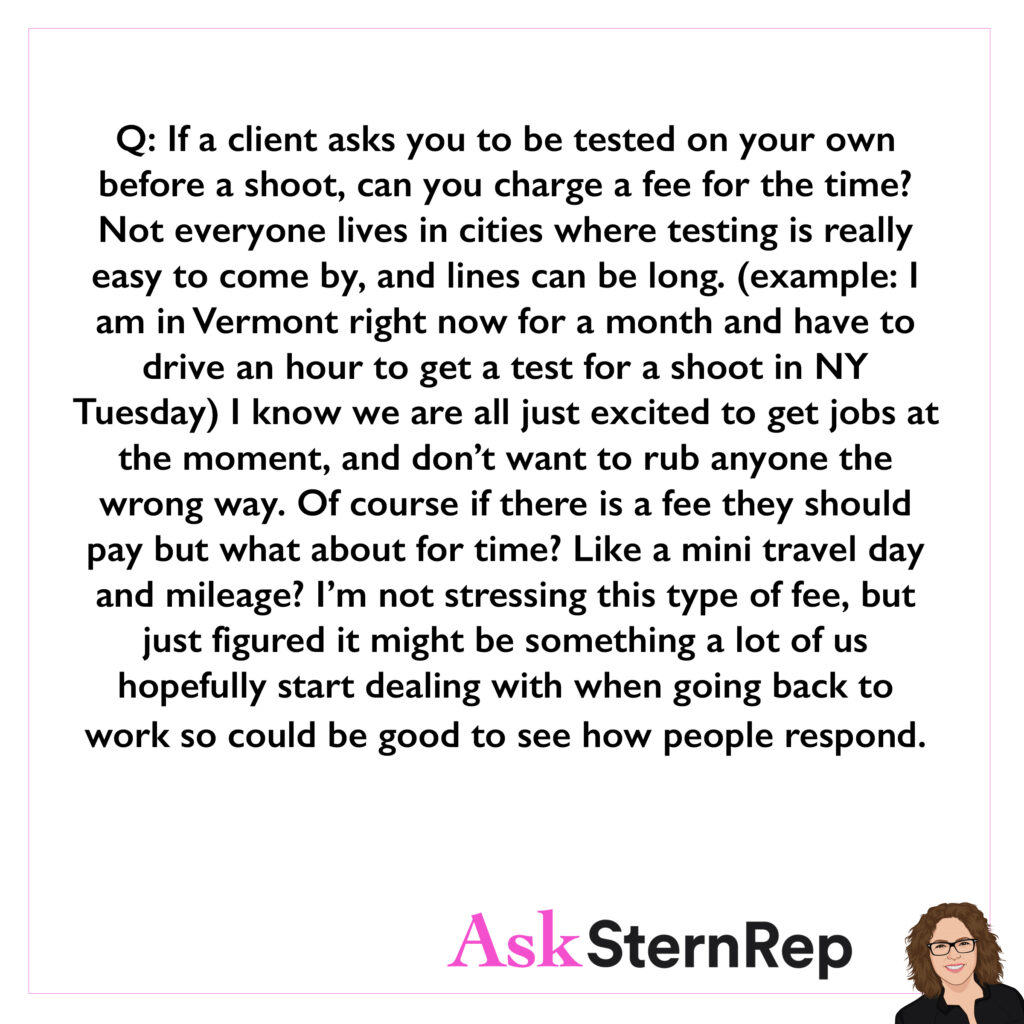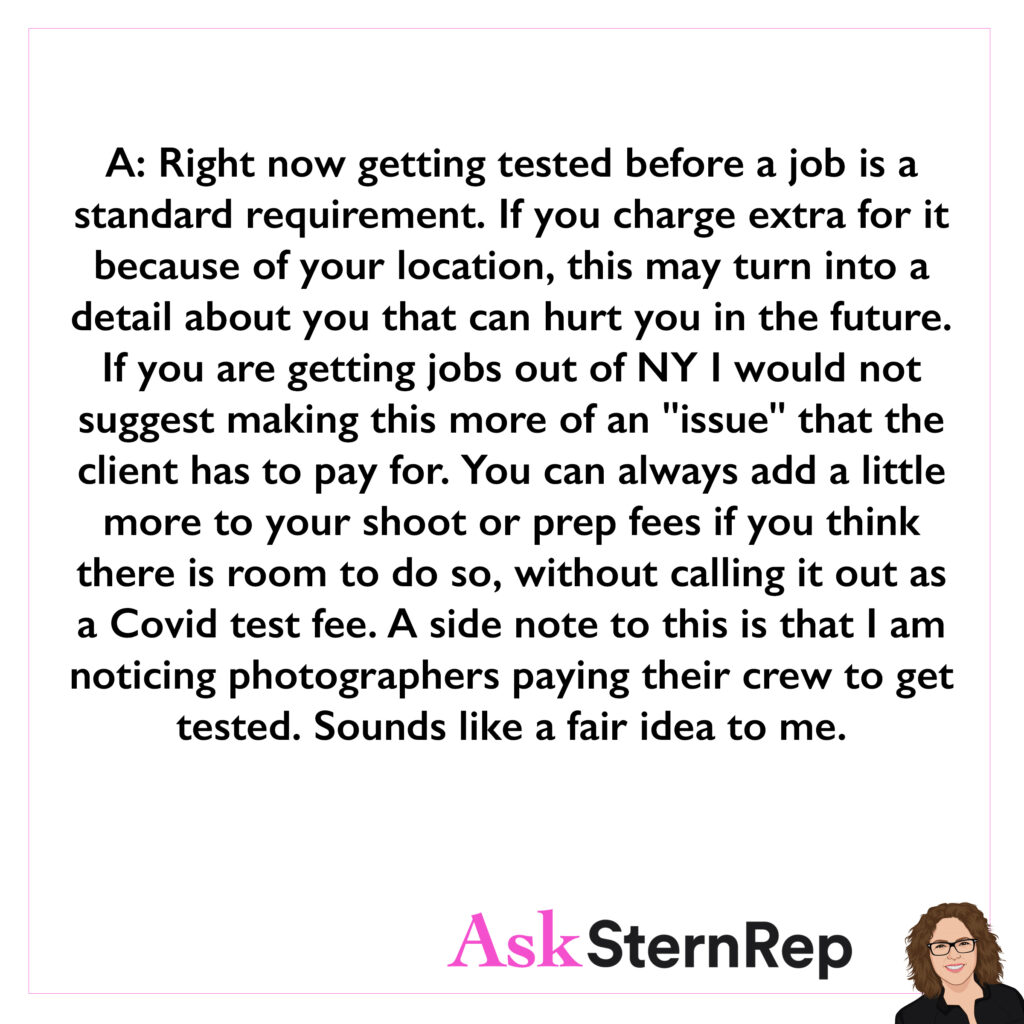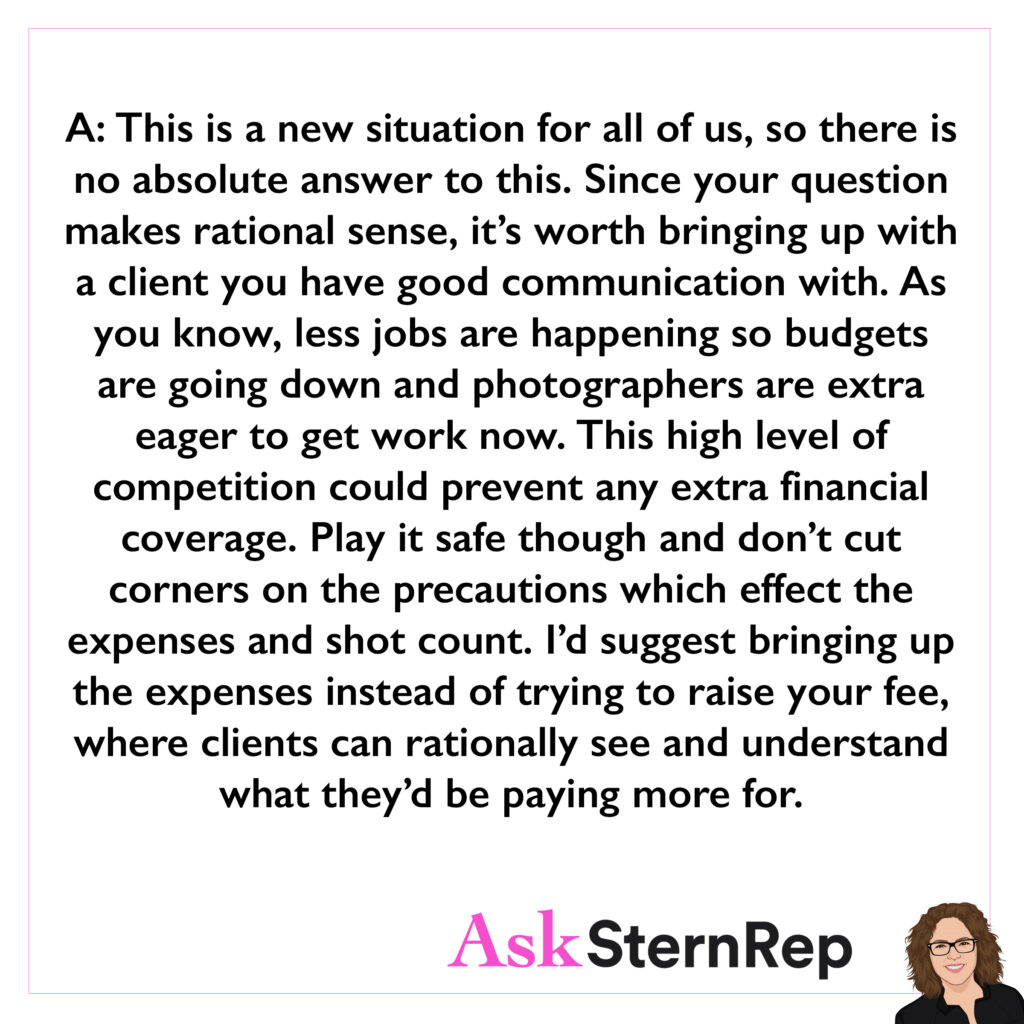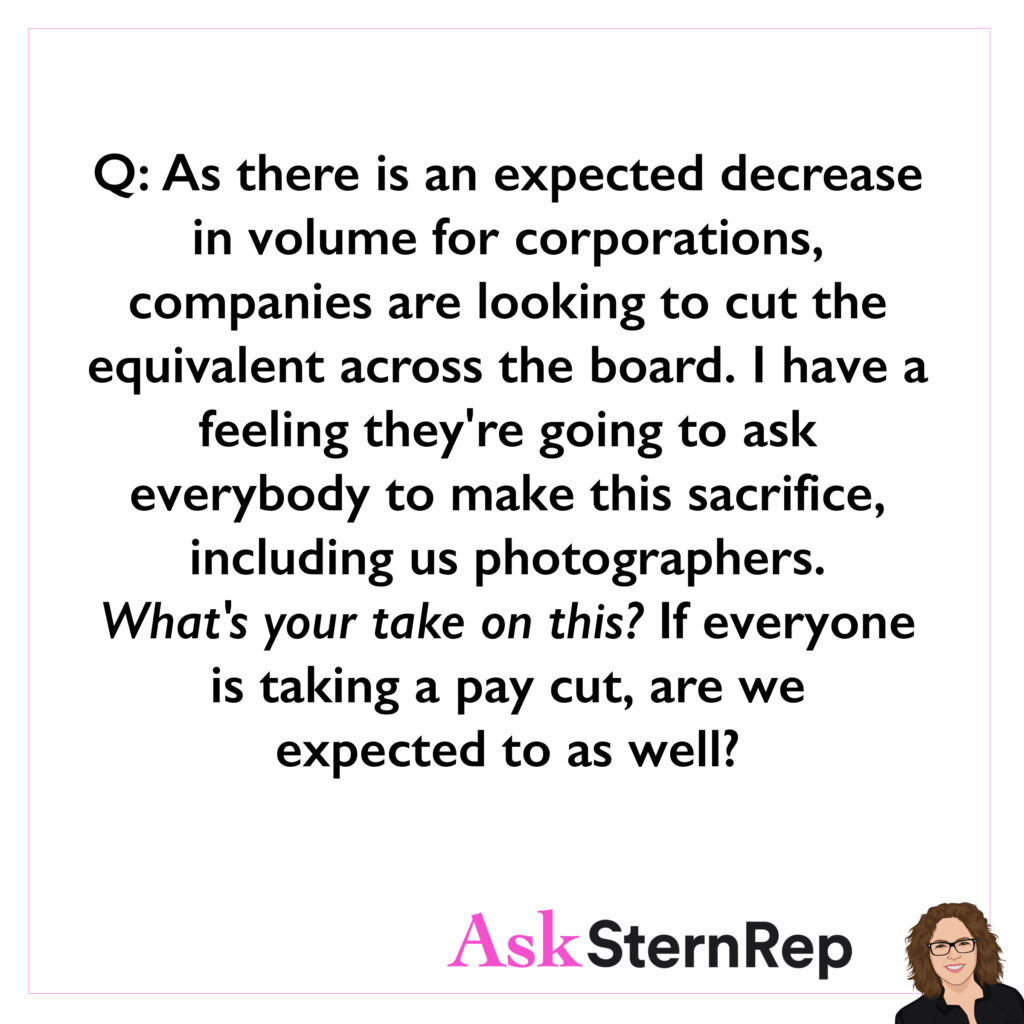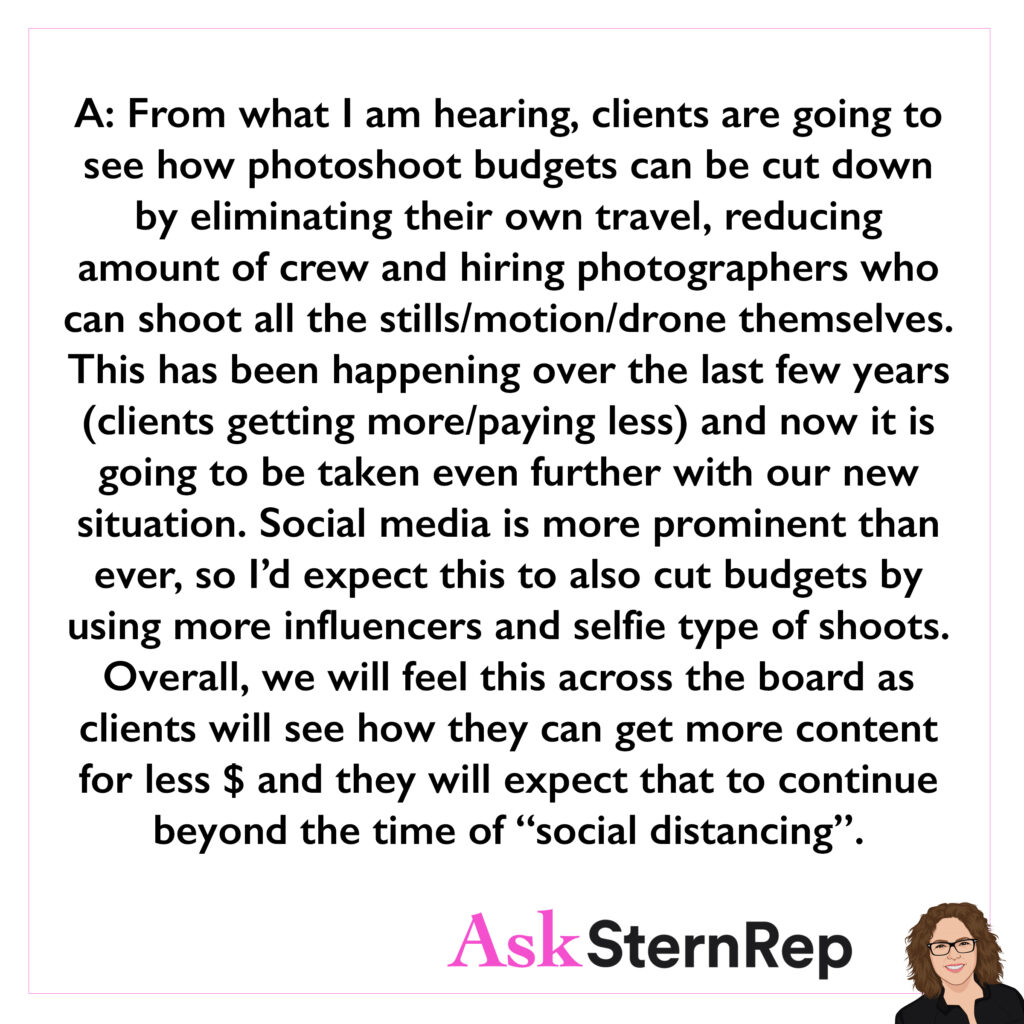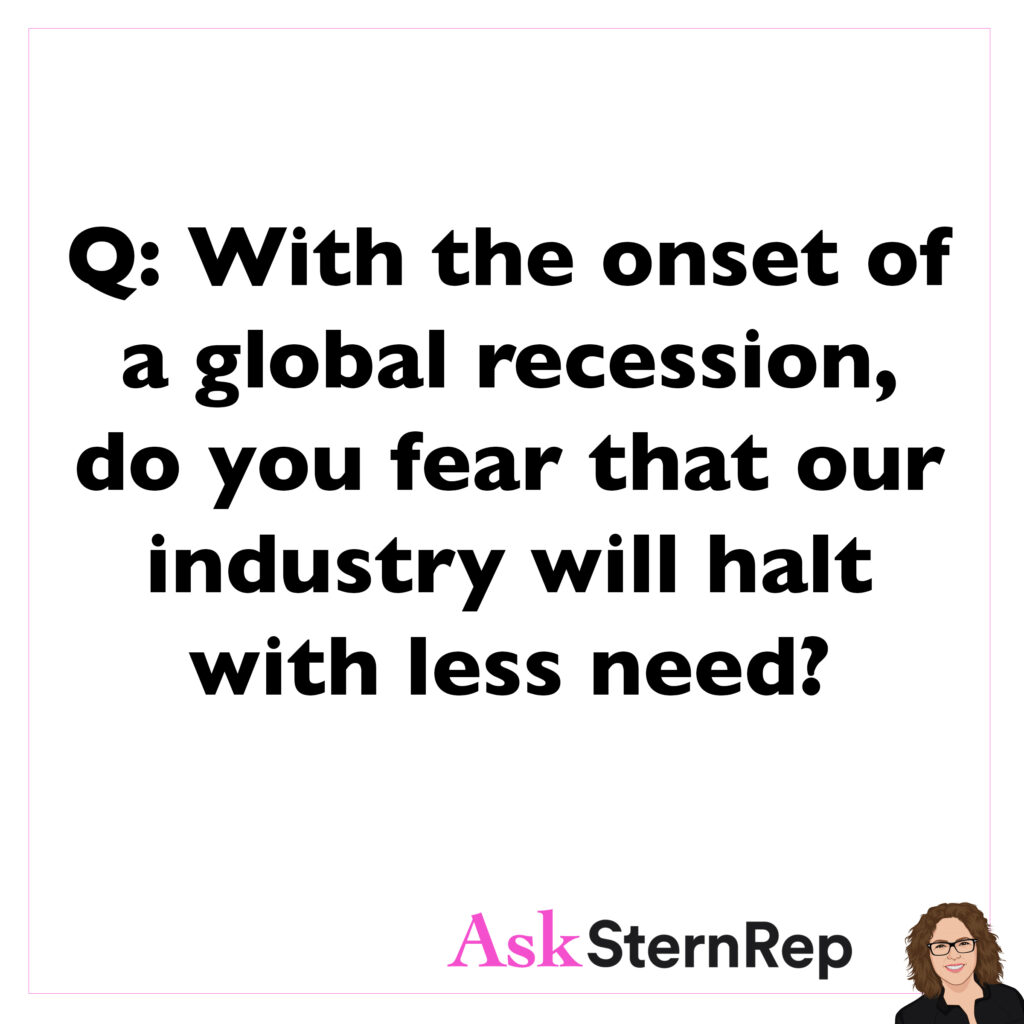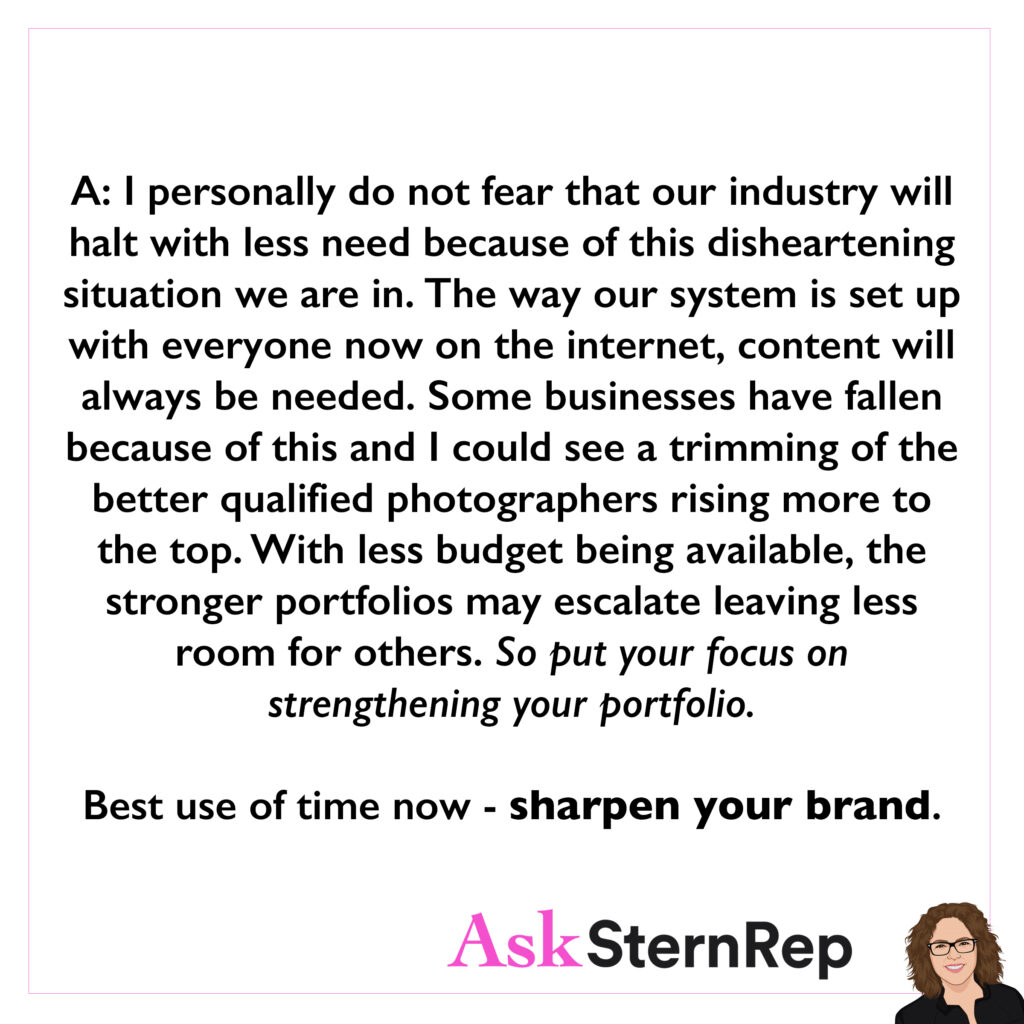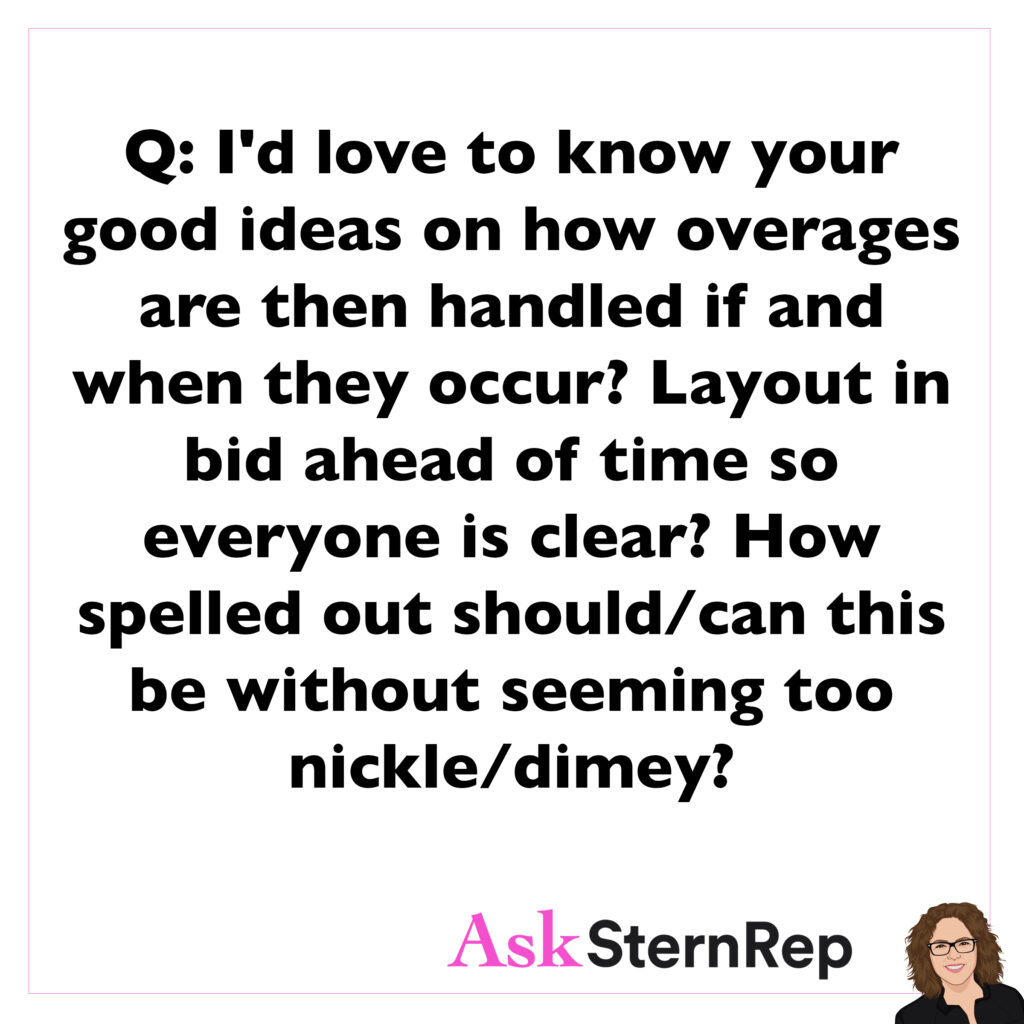
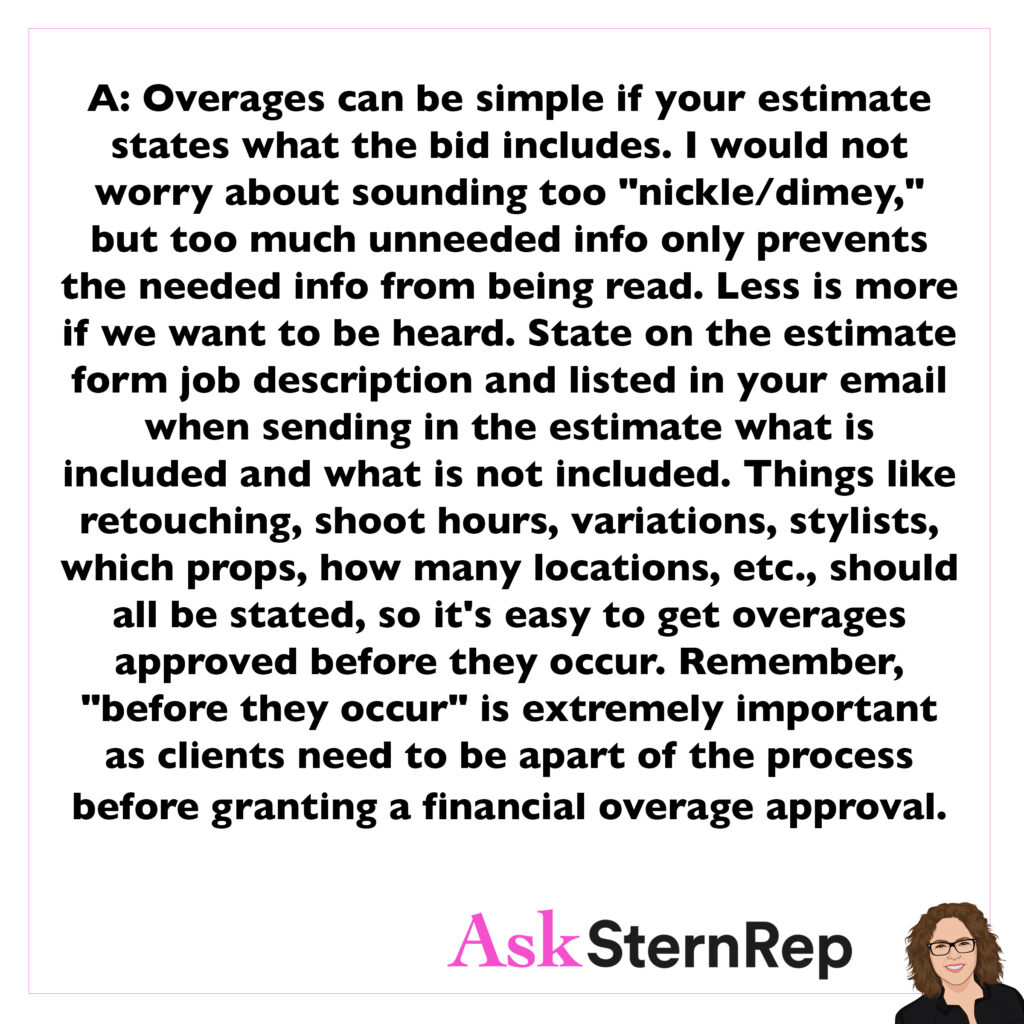
Q:
I’d love to know your good ideas on how overages are handled and if and when they occur? Layout in bid ahead of time so everyone is clear? How spelled out should/can this be without seeming too nickel/dimey?
A:
Overages can be simple if your estimate states what the bid includes. I would not worry about sounding too “nickel/dimey,” but too much unneeded info only prevents the needed info from being read. Less is more if we want to be heard. State on the estimate form job description and listed in your email when sending in the estimate what is included and what is not included. Things like retouching, shoot hours, variations, stylists, which props, how many locations, etc., should all be stated, so it’s easy to get overages approved before they occur. Remember, “before they occur” is extremely important as clients need to be a part of the process before granting a financial overage approval.


